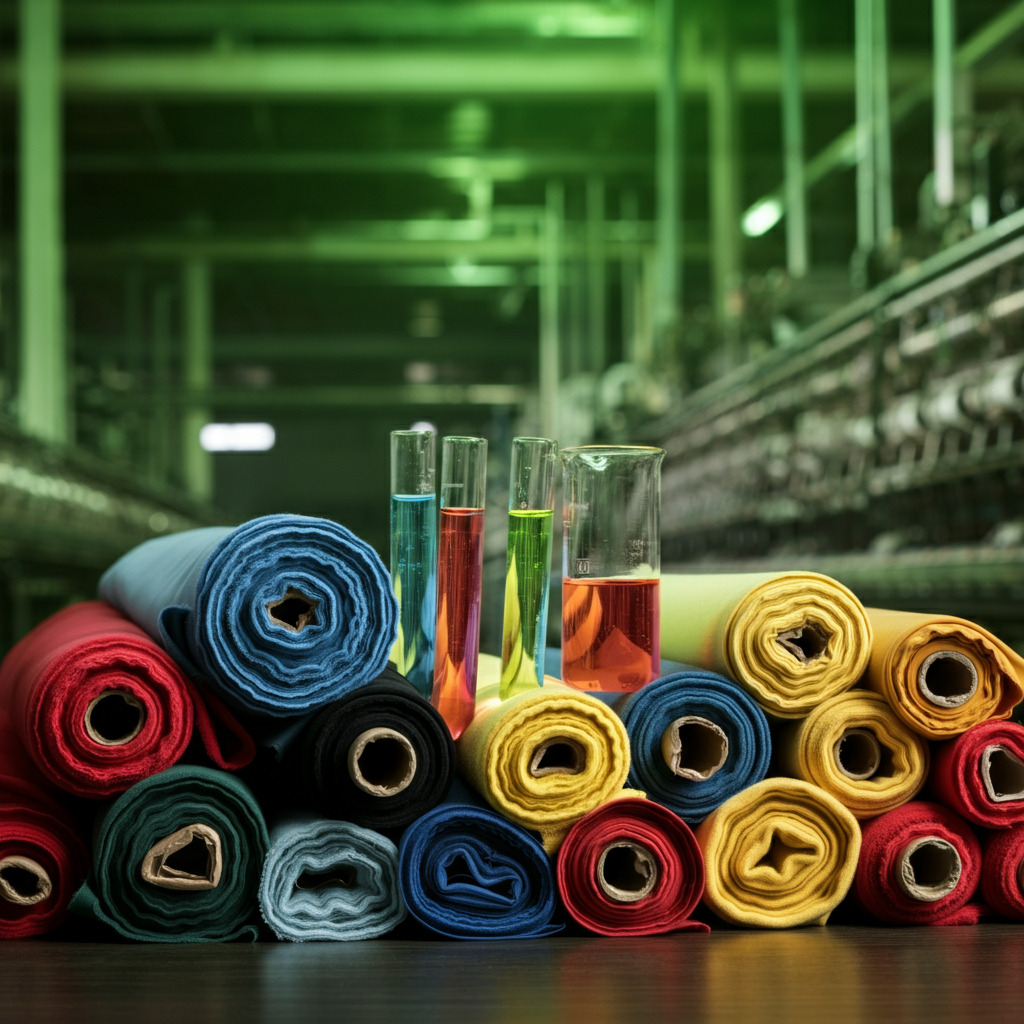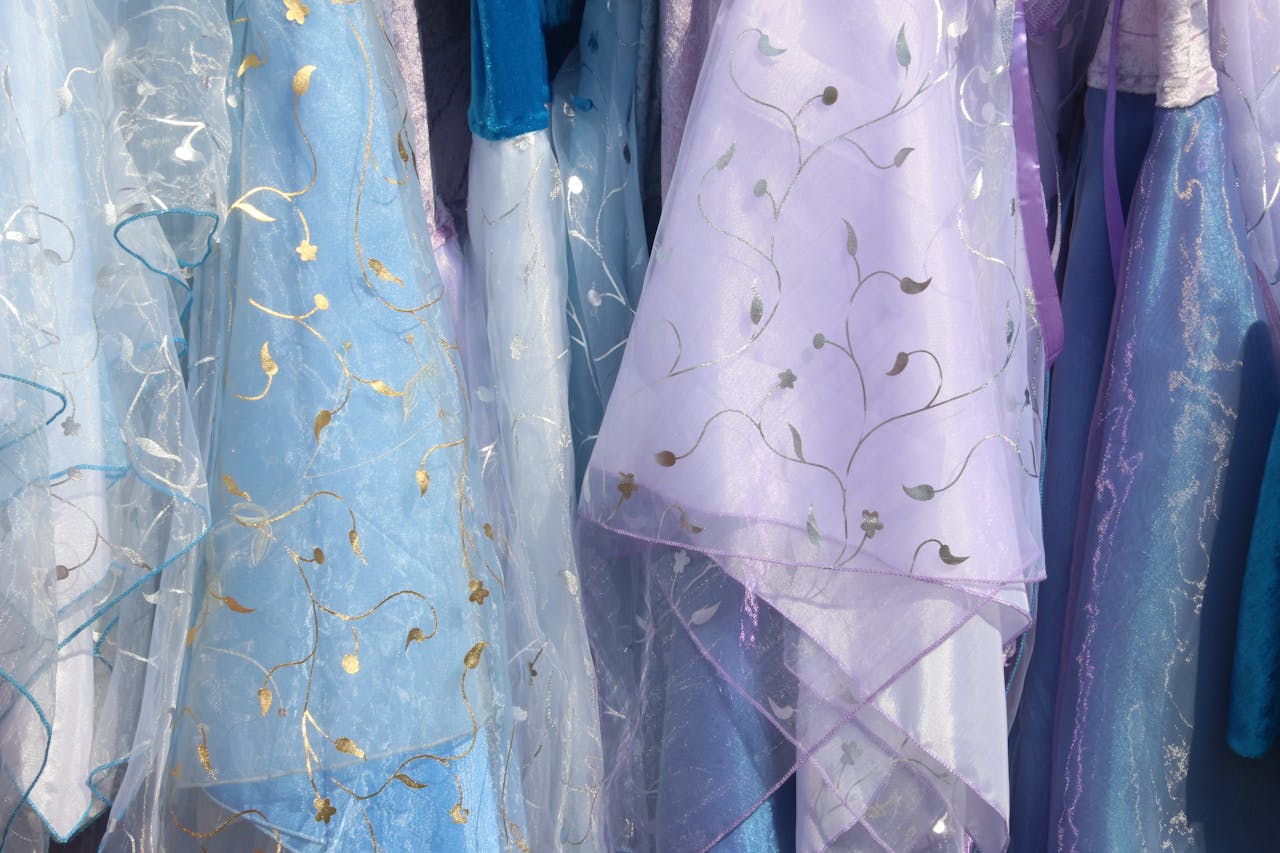Textile production is one of the oldest industries in human history, yet it remains at the forefront of innovation and technology. But behind the colorful fabrics, durable materials, and sustainable products we see today lies an unsung hero—textile auxiliaries. These chemical agents play a pivotal role in reshaping how garments are made, used, and even discarded.
Did you know that over 70% of the processes used in making textiles depend on auxiliaries? Without them, achieving the desired quality, color, and functionality of fabrics wouldn’t be possible. If you’ve never considered the importance of these agents, you’re not alone. Yet, they are the backbone of textile manufacturing, ensuring both efficiency and sustainability.
This blog will guide you through key insights about textile auxiliaries—their types, their benefits, and the latest innovations driving their evolution. Whether you’re a textile manufacturer, an industry professional, or simply curious, you’re about to discover the hidden force redefining the fabric of our lives.
What Are Textile Auxiliaries?
Simply put, textile auxiliaries are chemical agents applied during various stages of textile manufacturing. From preparation and dyeing to finishing, these substances enhance the quality, performance, and efficiency of the production process. They help soft fabrics feel softer, colors stay vibrant longer, and fabrics adopt advanced properties like water resistance or flame retardance. Yet, their impact stretches beyond aesthetics—they’re vital for ensuring streamlined operations and reducing environmental costs.
Types of Textile Auxiliaries
Textile auxiliaries come in many forms, each catering to specific stages of production. Understanding the types not only highlights their importance but also showcases the complexity of modern textile engineering.
1. Pre-Treatment Auxiliaries
These agents prepare raw textiles for dyeing, printing, or finishing. Without them, achieving uniformity and precision would be nearly impossible.
- Desizing Agents remove sizing materials applied to fabrics during weaving.
- Scouring Agents eliminate natural impurities like wax and grease from fibers.
- Bleaching Agents ensure fabrics achieve a clean, white base, perfect for vibrant dye application.
Example: A leading denim manufacturer used innovative desizing agents to reduce water usage by 30% in pre-treatment processes, marking a breakthrough in eco-friendly production.
2. Dyeing Auxiliaries
Critical to adding color, these auxiliaries help disperse dyes evenly and improve colorfastness.
- Leveling Agents ensure consistent color across the fabric.
- Dispersing Agents break down clumps of dye particles, enhancing penetration.
- Fixing Agents lock colors into fibers, making them resistant to fading.
3. Finishing Auxiliaries
Finishing touches can drastically transform a textile’s properties.
- Softening Agents enhance texture, making fabrics feel luxurious.
- Water-Repellent Agents provide advanced functionality, ideal for outdoor or activewear.
- Flame Retardants, a safety feature in industries like construction or aviation.
4. Specialty Auxiliaries
These niche agents offer advanced characteristics that meet specific consumer or industrial needs.
- Antimicrobial Agents protect against bacteria and unpleasant odors.
- UV Protection Agents shield fabrics from damaging sunlight.
- Anti-Static Agents eliminate unwanted static electricity in synthetic fibers.
The Benefits of Textile Auxiliaries in Production
Textile auxiliaries aren’t just add-ons; they are integral to improving production and product quality. Below are some game-changing advantages they bring to the table:
1. Enhanced Efficiency
Time and resource savings are critical in manufacturing. Auxiliaries allow for faster processes by:
- Reducing energy demands during pre-treatment.
- Limiting water consumption in dyeing and finishing.
2. Superior Fabric Quality
Auxiliaries enable manufacturers to exceed customer expectations by improving:
- Texture for softness and comfort.
- Durability, ensuring garments last longer.
- Color Vibrancy that stays sharp even after multiple washes.
3. Sustainability
Eco-conscious manufacturing processes are emerging trends, and auxiliaries play a vital role. With biodegradable or non-toxic alternatives, manufacturers significantly reduce their environmental footprint. For instance, waterless bleaching agents and plant-based finishing solutions address growing consumer demand for sustainability.
Visual Suggestion: A flowchart highlighting where auxiliaries are used during the textile production process to enhance outcomes at each stage.
Latest Innovations in Textile Auxiliaries
Innovation never stops, particularly in an industry as dynamic as textiles. Here are some of the most exciting developments within textile auxiliaries:
1. Eco-Friendly Alternatives
Biodegradability and low chemical toxicity have become top priorities. Companies are phasing out hazardous chemicals in favor of plant-based and renewable resources.
2. Smart Auxiliaries
Imagine fabrics that clean themselves or change their properties under certain conditions. Smart auxiliaries offer solutions like:
- Temperature-sensitive agents for adaptive clothing.
- Self-cleaning agents that repel dirt or water altogether.
3. Data-Driven Manufacturing
Emerging technologies such as AI (Artificial Intelligence) and IoT (Internet of Things) integrate with textile auxiliaries. These innovations allow real-time monitoring for precise chemical application, reducing waste and improving results.
Case Study
An innovative fabric manufacturer employed IoT-powered machines to calculate the exact amount of dyeing auxiliary needed for various fabric weights, cutting chemical waste by 40% while saving resources.
Visual Suggestion: A comparison chart showing the contrast between traditional methods and cutting-edge innovations, emphasizing their impact on efficiency and sustainability.
Conclusions and Next Steps
Textile auxiliaries may work behind the scenes, but their contributions to the textile industry are nothing short of revolutionary. From pre-treatment to finishing, their role is pivotal in enhancing efficiency, improving quality, and driving sustainability. Advances in eco-friendliness and smart technology are steering the textile industry into a more sustainable future.
What’s next for you? If you’re curious about adopting advanced textile auxiliaries in your process or simply wish to learn more, take the first step. Explore resources, connect with industry experts, or visit our website for more detailed insights. After all, innovative fabrics deserve cutting-edge solutions!
Textile Auxiliaries FAQ
Q: What are textile auxiliaries, and why are they important?
A: Textile auxiliaries are chemicals used during various stages of textile manufacturing, such as pretreatment, dyeing, printing, and finishing. They enhance the efficiency of processes and improve the quality, performance, and appearance of textiles, ensuring manufacturers meet industry standards and consumer demands.
Q: Which factors should I consider when selecting textile auxiliaries?
A: Key factors include compatibility with your textile material, eco-friendliness, process requirements, and cost-effectiveness. Additionally, ensure the auxiliary complies with local and international regulations to avoid regulatory challenges.
Q: How do eco-friendly textile auxiliaries benefit manufacturers?
A: Eco-friendly auxiliaries help manufacturers reduce environmental impact by lowering water usage, minimizing harmful waste, and ensuring biodegradable or non-toxic residues. They also help brands maintain sustainability certifications, appealing to eco-conscious consumers.
Q: How can I improve efficiency when using textile auxiliaries?
A: Optimize your processes by using high-quality auxiliaries suited to your specific applications. Regularly maintain equipment, follow recommended formulation guidelines, and consider collaborating with suppliers for customized solutions that streamline production.



